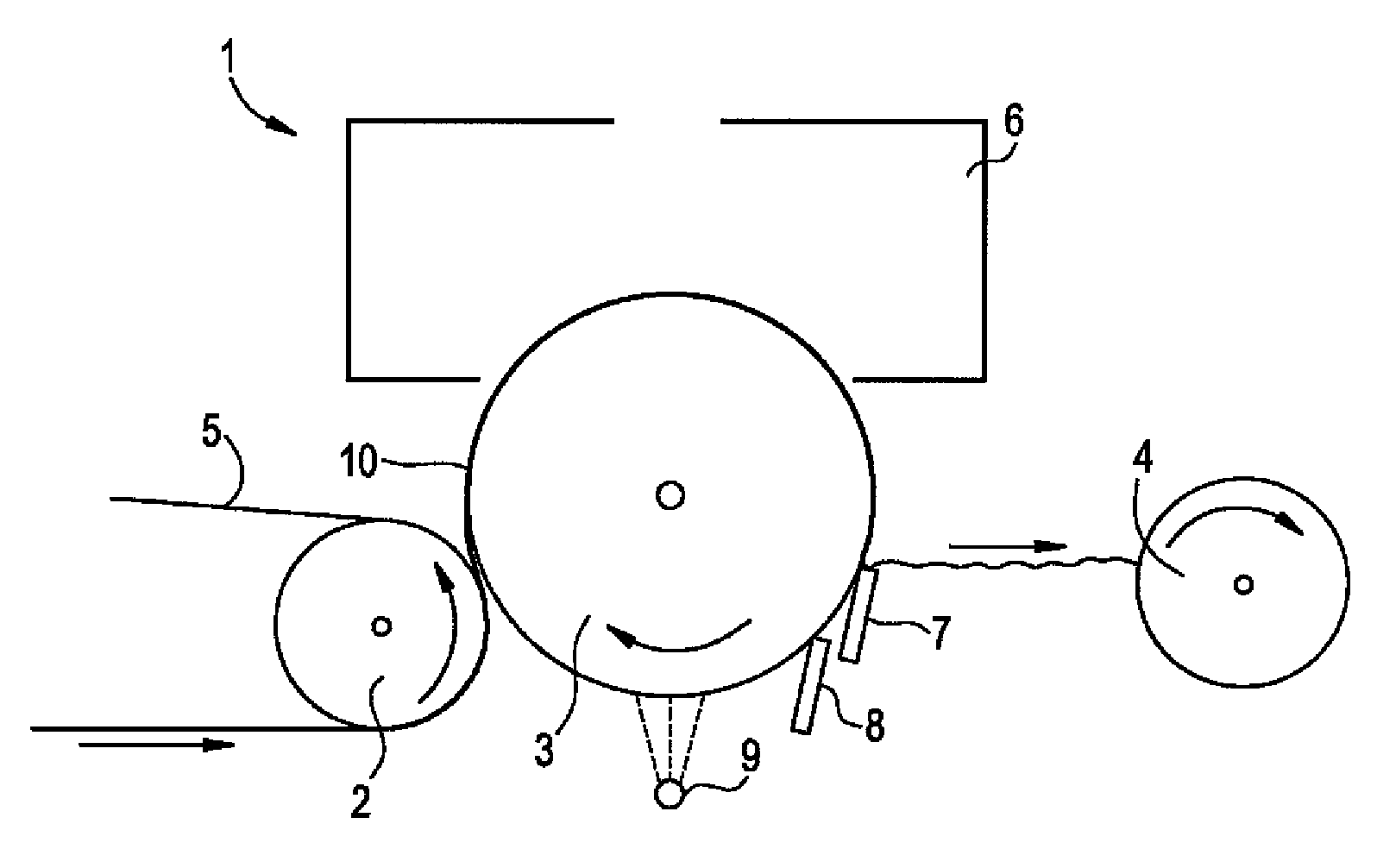Creping adhesives with improved film properties
a technology of adhesives and film properties, applied in the field of matter composition, can solve the problems of insufficient rewettability, insufficient water soluble adhesive coatings, and insufficient reaction to any significant degree of resins
- Summary
- Abstract
- Description
- Claims
- Application Information
AI Technical Summary
Problems solved by technology
Method used
Image
Examples
example 1
Preparation of a Representative Adhesive Composition with Multifunctional Acid
[0042]A 1.5 L resin kettle reactor was charged with 326.04 g of a 50% aqueous solution of polyamidoamine and 815.79 g DI water. The solution was mixed at 400 rpm using an overhead stirrer (2.5″ 6-blade impeller with 45° pitch). The vessel was purged of oxygen by diffusing nitrogen into the headspace at 0.3 L / min. The solution temperature was raised to 50° C. and 12.81 g epichlorohydrin were dispensed into the reactor as a single bolus under positive nitrogen pressure. The reaction temperature was maintained at 50° C. After 2 h, a sample of the reaction was withdrawn and was transferred to the small sample cup of a Brookfield rheometer. The small sample adapter was held at 25° C. by means of a temperature bath. The sample viscosity was measured once the sample temperature had stabilized at 25° C. (spindle #18 @ 30 rpm). The solution viscosity was measured hourly until the viscosity had exceeded 12 cPs. The ...
example 2
Preparation of a Representative Adhesive Composition with Mineral and Multifunctional Acids
[0043]A 1.5 L resin kettle reactor was charged with 361 g of a 50% aqueous polyamidoamine solution and 901.27 g DI water. The solution was mixed at 400 rpm using an overhead stirrer (2.5″ 6-blade impeller with 90° pitch). The vessel was purged of oxygen by diffusing nitrogen into the headspace at 0.3 L / min. The solution temperature was raised to 50° C. and 12.62 g epichlorohydrin were dispensed into the reactor as a single bolus under positive nitrogen pressure. The reaction temperature was maintained at 50° C. After 2 h, a sample of the reaction was withdrawn. The sample was transferred to the small sample cup of a Brookfield rheometer. The small sample adapter was held at 25° C. by means of a temperature bath. The sample viscosity was measured once the sample temperature had stabilized at 25° C. (spindle #18 @ 30 rpm). The solution viscosity was measured hourly until the viscosity had exceed...
example 3
Shear Modulus and Peel Adhesion
[0044]The storage shear modulus, G′, and the loss shear modulus, G″, were determined using a rheometer AR2000 (TA Instruments, New Castle, Del.). The complex shear modulus, |G*|, was calculated as √{square root over ((G′)2+(G″)2)}{square root over ((G′)2+(G″)2)}. Samples were prepared by casting a film from a 5% (w / w) polymer solution. The samples were dried in an oven at 95° C. overnight. The resulting film was punched with a die (8 mm in diameter) to make a sample disc. The disks were dried in vacuum oven at 110° C. for two hours and stored in a desiccator before use. Some film disks that had a tendency to retain more water could not be dried under vacuum because of formation of bubbles. These films were dried at 120° C. for 2 hours without vacuum. The geometry used for the analysis was 8-mm stainless steel parallel plates. The shear storage modulus was determined at 110° C., 1 Hz and 0.1% strain in oscillation mode.
[0045]The adhesion provided by the...
PUM
| Property | Measurement | Unit |
|---|---|---|
| temperature | aaaaa | aaaaa |
| weight-average molecular weight | aaaaa | aaaaa |
| shear modulus | aaaaa | aaaaa |
Abstract
Description
Claims
Application Information
 Login to View More
Login to View More - R&D
- Intellectual Property
- Life Sciences
- Materials
- Tech Scout
- Unparalleled Data Quality
- Higher Quality Content
- 60% Fewer Hallucinations
Browse by: Latest US Patents, China's latest patents, Technical Efficacy Thesaurus, Application Domain, Technology Topic, Popular Technical Reports.
© 2025 PatSnap. All rights reserved.Legal|Privacy policy|Modern Slavery Act Transparency Statement|Sitemap|About US| Contact US: help@patsnap.com



